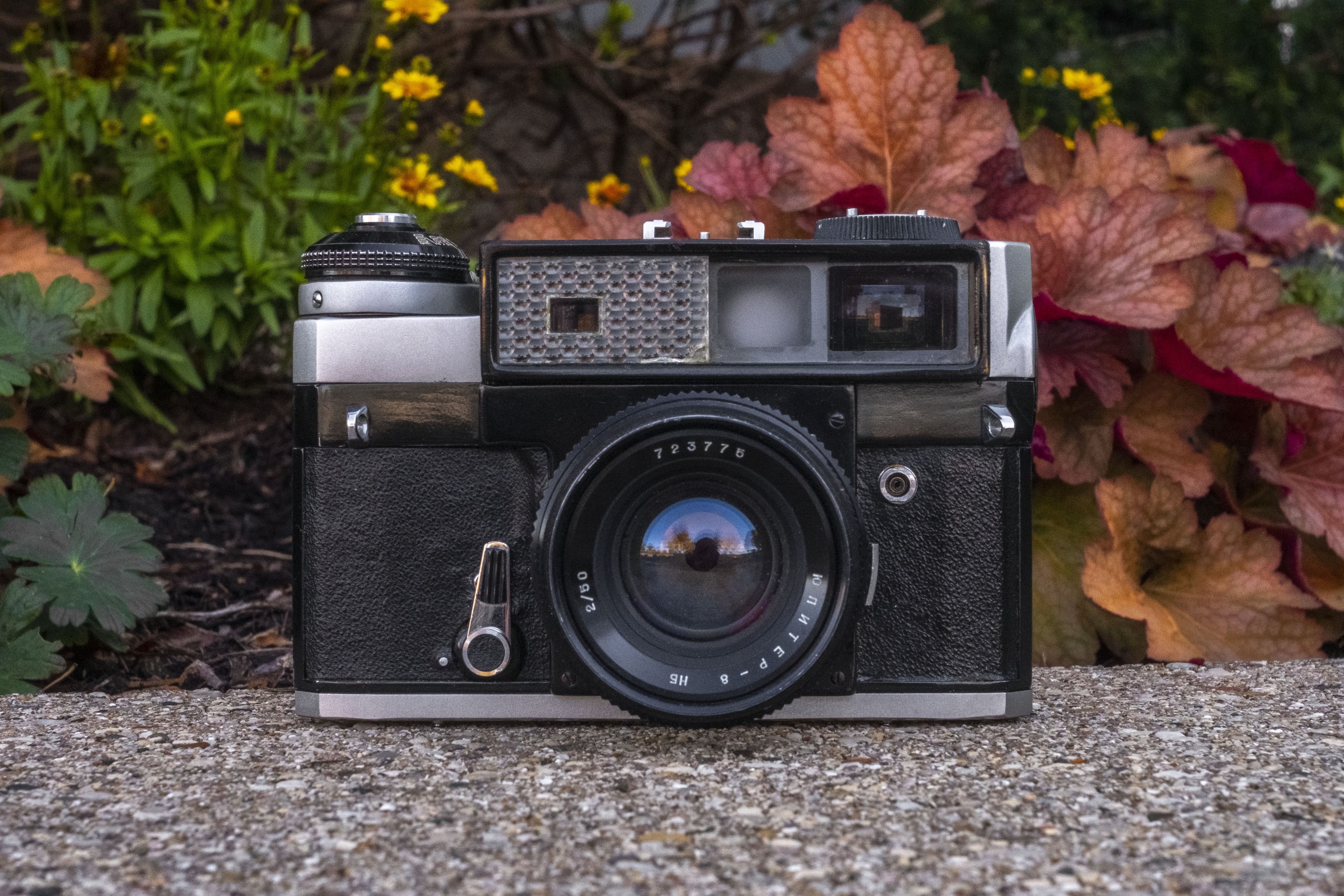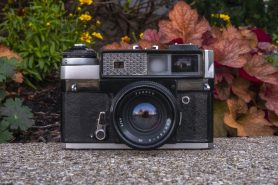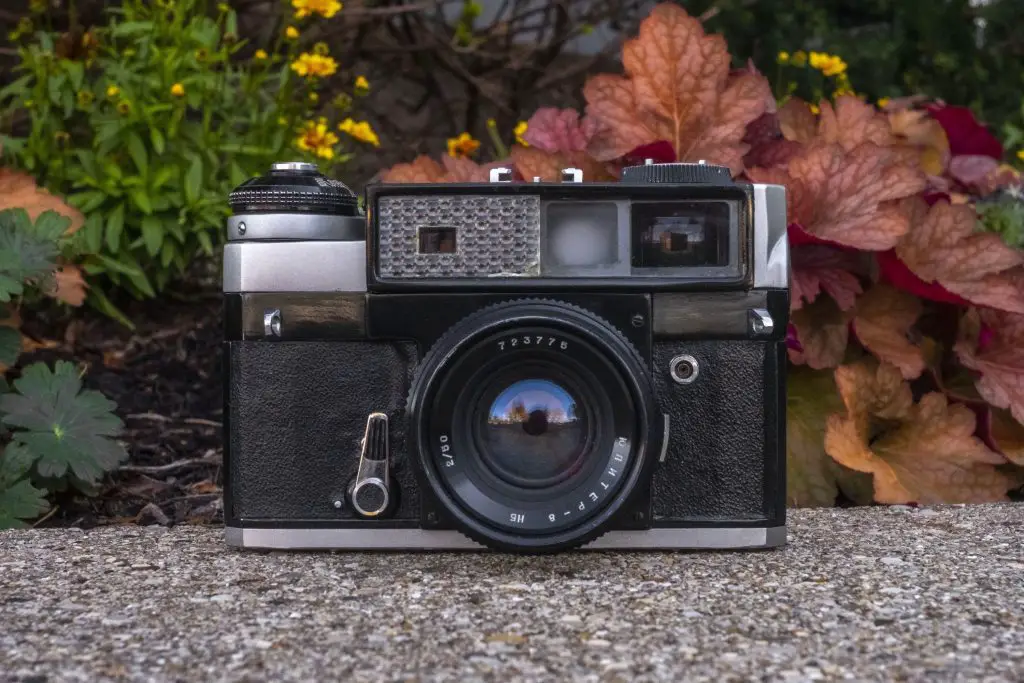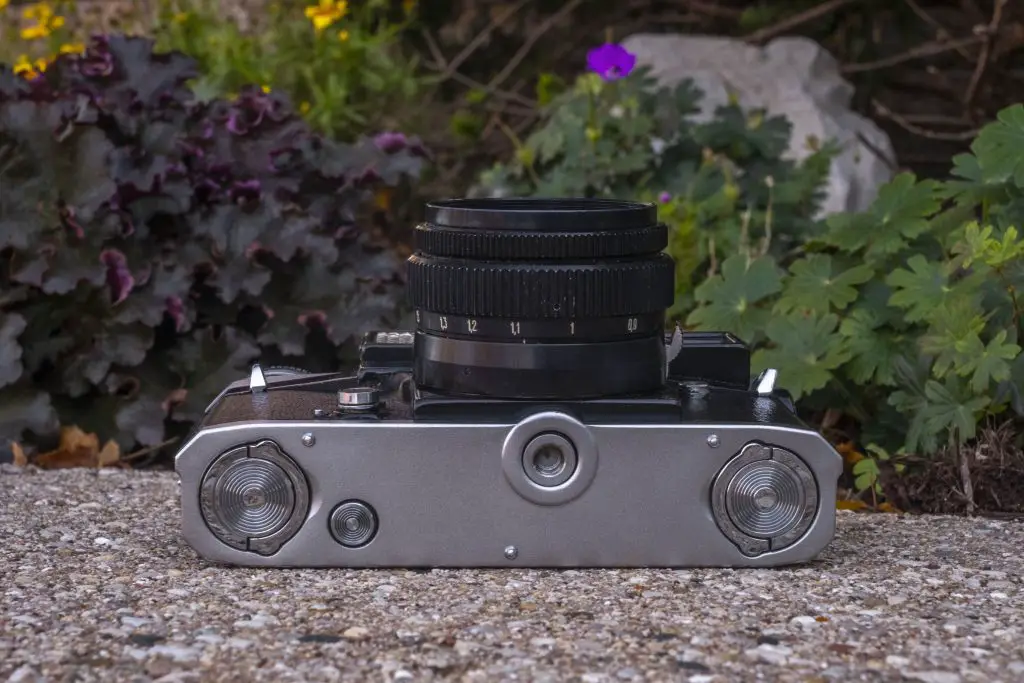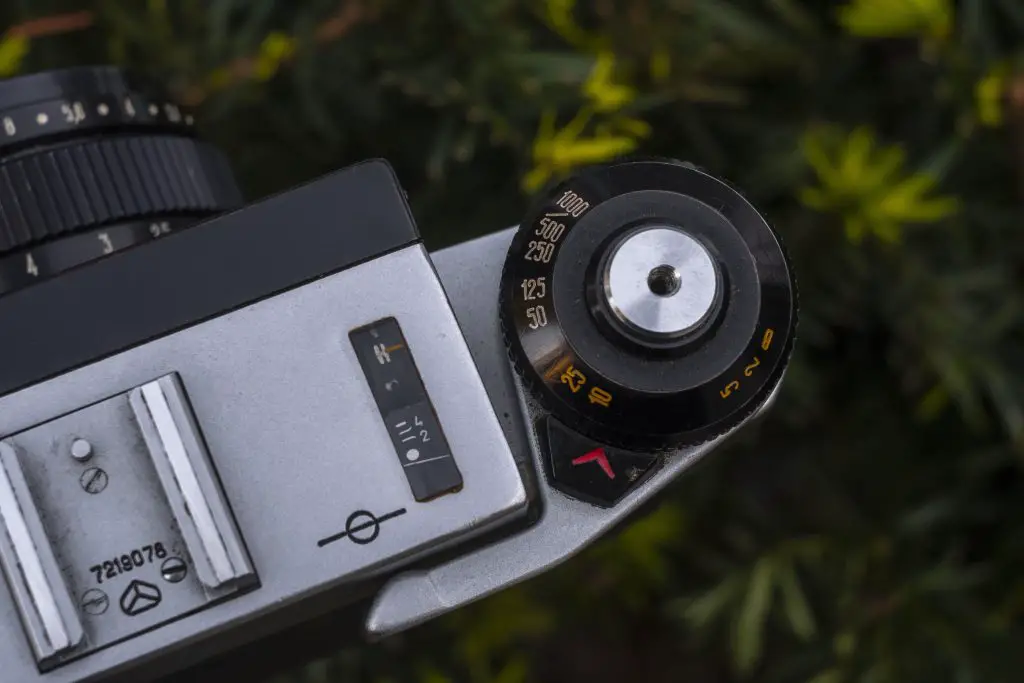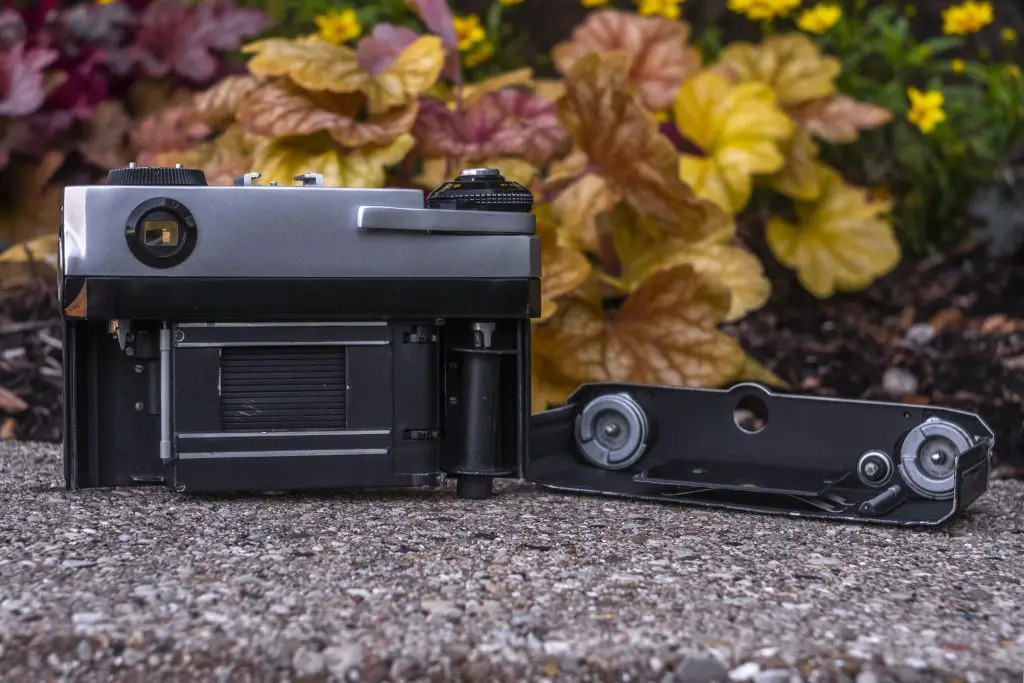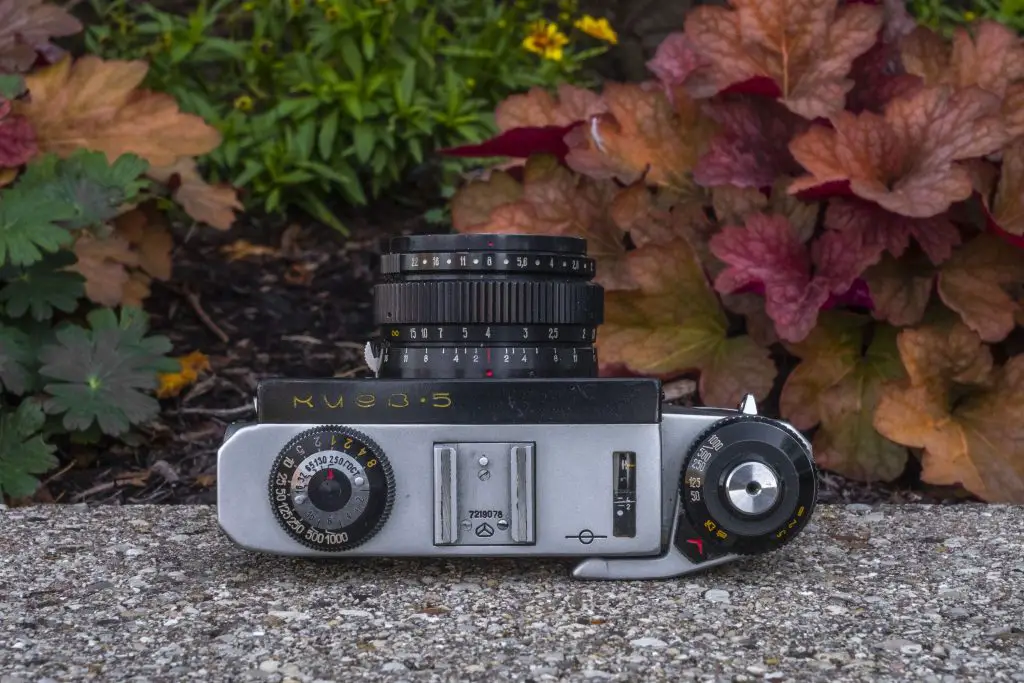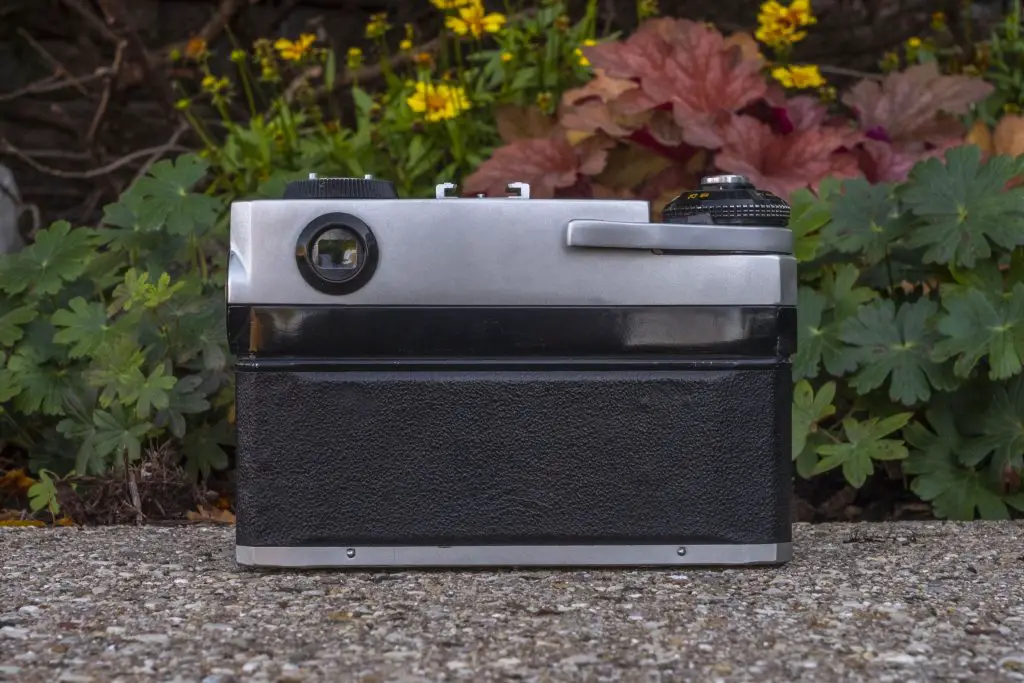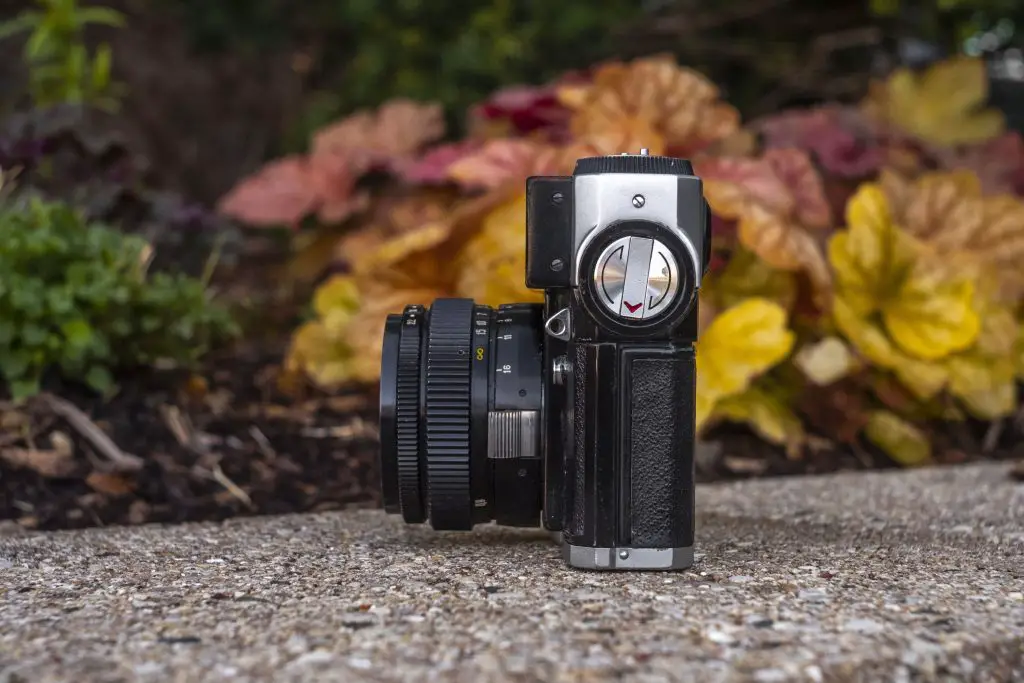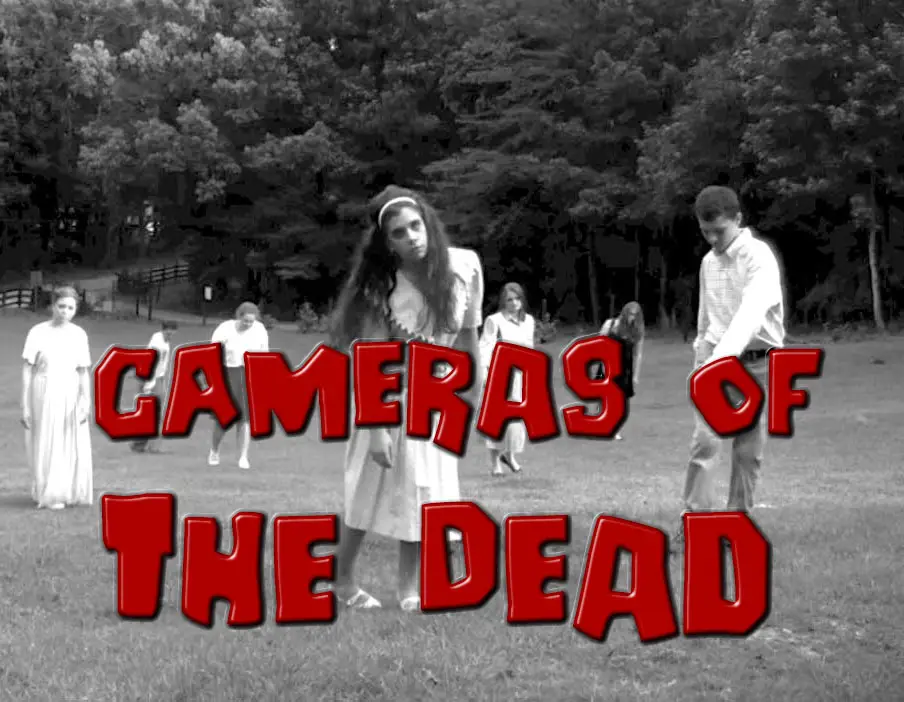 This review is part of the Cameras of the Dead series which I have been publishing every year on Halloween and “Halfway to” Halloween, featuring three cameras that I’ve wanted to review that either didn’t work, or was otherwise unable to shoot.
This review is part of the Cameras of the Dead series which I have been publishing every year on Halloween and “Halfway to” Halloween, featuring three cameras that I’ve wanted to review that either didn’t work, or was otherwise unable to shoot.
I am republishing each of those individual reviews this October in anticipation of this Halloween’s Cameras of the Dead post as a way to revisit the cameras of the past that allows them to be properly indexed on the site.
This is a Kiev 5, a 35mm rangefinder camera made at the Arsenal plant in Kiev, Ukraine, in the former Soviet Union between the years 1967 to 1973. The Kiev 5 was a heavily updated version of the Kiev III and 4, which were near identical copies to the Zeiss-Ikon Contax rangefinder. The Kiev 5 improved upon the earlier models with a much larger viewfinder with parallax corrected projected frame lines and a shorter base rangefinder. It has a lever wind film advance, a modified Contax lens mount, and an integrated selenium exposure meter. Although a much improved model, the upgrades greatly increased the cost of the camera and it did not sell well, being discontinued in 1973.
Film Type: 135 (35mm)
Lens: 50mm f/2 Jupiter-8 NB Coated 6-elements
Lens Mount: Kiev 5 Bayonet (Contax Outer Bayonet only)
Focus: 17 Inches to Infinity
Viewfinder: Coupled Coincident Image Rangefinder.
Shutter: Vertical Metal “garage door” Focal Plane
Speeds: B, 1 – 1/1250 seconds
Exposure Meter: Coupled Selenium Cell w/ Top Plate Readout
Battery: None
Flash Mount: PC post with M and X sync
Weight: 925 grams (w/ lens), 735 grams (body only)
Manual: None
My Thoughts
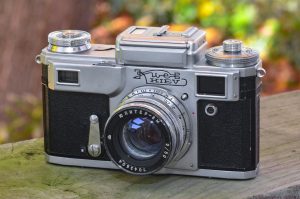
I wrote about the Kiev 4 way back in May 2015 when I first started this site. It was one of my first 10 reviews, and the first Soviet camera I ever shot film with. I still have that camera, but sadly I’ve neglected it for the past 4 years, letting it sit on my shelf waiting for a chance to shoot it again.
One of my biggest complaints with the camera is the small viewfinder with the eyeglass scratching metal ring around it. This is a camera that people who wear prescription glasses need to be really cautious of because the sharp metal is very rough on lens coatings. It’s a problem discussed on other sites where users have chosen to use adhesive backed pieces of felt and vinyl to cover up the sharp edges around the eye piece. The camera covering site, aki-asahi.com from Japan even sells pre-cut eyepiece patches for these cameras.
I know, excuses, excuses. There are many other cameras with tiny viewfinders that you need to be mindful of while using, but I’ll just say that I’ve always wanted to revisit this camera.
Then one day while browsing through Vladislav Kern’s collection over at ussrphoto.com, he handed me a Kiev 5 which I knew to be a short lived replacement to the Kiev 4 with several enhancements.
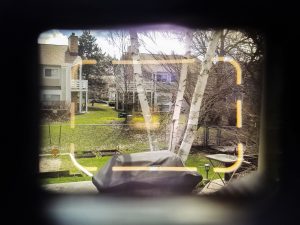
The significantly larger viewfinder is the most obvious change. The Arsenal plant where this camera was made, came up with a completely new coincident image rangefinder that was not only larger, but had a shorter base than the original Contax inspired one. The shorter rangefinder base meant the window for the coincident image could be closer to the center of the camera and not be so easily blocked by the photographer’s right hand. Early prototypes of the Kiev 5 had automatic parallax correction, but this was removed near the beginning of regular production. Additional enhancements were a film advance lever instead of a knob, and a change to the Contax lens mount, removing the internal bayonet and internal helicoid.
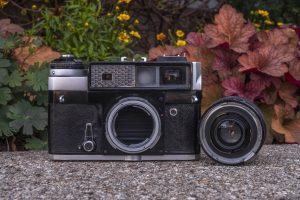
The original Contax mount used on all Contax rangefinders, the Kiev 4, and the Nikon S-series, is a dual bayonet mount. An internal bayonet is used for most 50mm lenses and has it’s own helicoid for focus. For every other lens, there was an external bayonet that required the lens to have it’s own helicoid. The advantage of the original design was that 50mm lenses were very compact and focused using the camera’s helicoid. Of course, this complicated the mount, so in an effort to make it cheaper and easier to produce, Arsenal completely removed this internal mount.
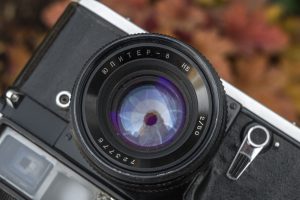
An obvious side effect of this is that any previous Kiev (or Contax) mount lenses that used the internal mount, were not compatible with the Kiev 5. Arsenal had to come up with a new standard 50mm lens that would mount using the external bayonet. Originally, a modified Jupiter 8, called the Jupiter 8 NB was offered, but later, a faster f/1.8 Helios-94 replaced it.
The upgraded Kiev 5 was first released in 1968 (some prototypes from 1967 exist) and was sold at a premium to the Kiev 4. There doesn’t seem to be any conclusive estimates of how many Kiev 5s were ever sold, but all references to production consider it to be quite rare. Sovietcams.com suggests a total production of anywhere between 8000 and 50,000 units. My guess is the number is probably closer to the lower number.
Reasons for the Kiev 5’s failure was likely due to it’s expense. Not many people in the Soviet Union during this time had an excess of money to spend on top of the line rangefinders like the Kiev 5. Millions of inexpensive Smenas, Zorkis, and FEDs were available for much cheaper prices that catered to the average person looking for a camera. Possibly further adding to the slow sales was that the Kiev 4 series was still available concurrently with the Kiev 5, meaning that if someone wanted a similar camera, they could still have the 4 at what I can only assume was a substantial cost savings.
Setting aside everything on the top plate, the rest of the camera works just like the Kiev 4. The shutter mechanism is exactly the same, and like on the Kiev 4, you MUST cock the shutter first before changing shutter speeds. The film back comes completely off the camera using the two locks on the bottom plate and loading film is the same as previous Kievs and the Contax rangefinders that came before it.
The removal of the internal bayonet with the focusing helix from the previous model also required removal of the saw tooth precision focusing wheel on the top plate of the Kiev 4. This isn’t necessarily a bad thing as I’ve always found this wheel on cameras that had it (including Nikon rangefinders) to be uncomfortable to use. I also have to imagine that this simplified the camera, eliminating more pieces to fail.
The Kiev 4 is an imperfect, but nice camera that I’ve always enjoyed using, and while finding one in good working condition today is a bit of a challenge, your odds are no worse than finding a working Contax rangefinder which they were based off. The Kiev 5 improves on the Kiev 4 in almost every way that it needed to be. The viewfinder is MUCH larger and easier to use, the meter readout is located within the top plate and no longer looks like an afterthought, there’s a film advance lever, the shutter speed selector is larger and easier to use, and the side mounted rewind knob has a fold out lever (this would eventually be added to the Kiev 4M starting in 1976).
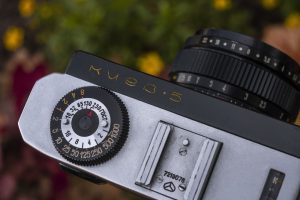
Yet, despite all of these improvements, the camera’s biggest weakness is still it’s shutter. An unnecessarily complicated design that dates back to the 1930s that Zeiss themselves struggled to make work correctly. It was a design that Nippon Kogaku wisely chose not to copy when they built their first rangefinders in the late 1940s. In addition to the various complexities, the curtains themselves were held together with strips of cloth that simply weren’t designed to last decades, and few are found working today…including this one.
When I first picked up this Kiev 5, the shutter was working. I dry fired it a couple of times before taking it home, and it continued to work after loading in a roll of film to test it out, but after a single exposure, the shutter snapped and upon reopening the back of the camera (I rewound the film back into the cassette first), I could see the first curtain would no longer move.
Thankfully, Vladislav was understanding in that these things almost never work and a shutter issue like this was inevitable. Although I had to return the camera to it’s owner without ever shooting any images in it, I felt it was worthy of some kind of mention, if only, as a камера смерти.
Related Posts You Might Enjoy
External Links
http://camera-wiki.org/wiki/Kiev_rangefinder#Kiev-5
http://sovietcams.com/index.php?2553668613
http://ussrphoto.com/Wiki/default.asp?WikiCatID=20&ParentID=1&ContentID=182&Item=Kiev+5
https://www.rangefinderforum.com/forums/showthread.php?t=146055

